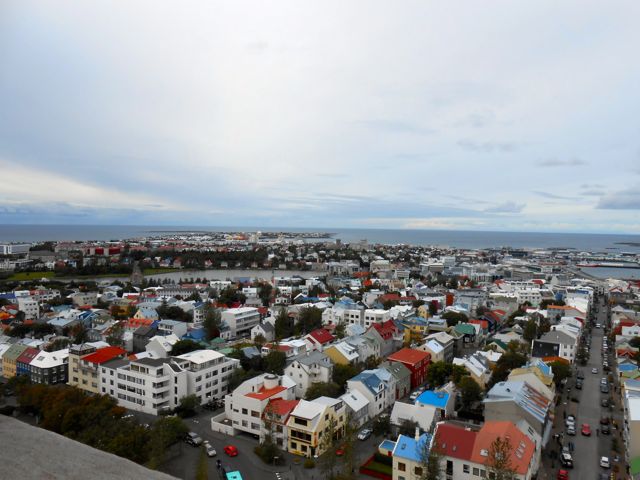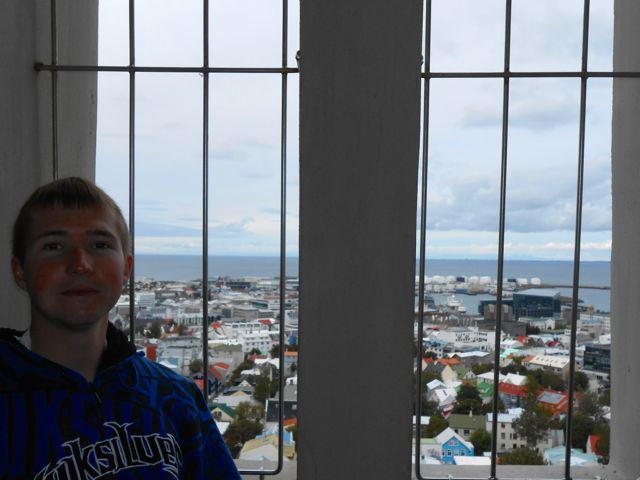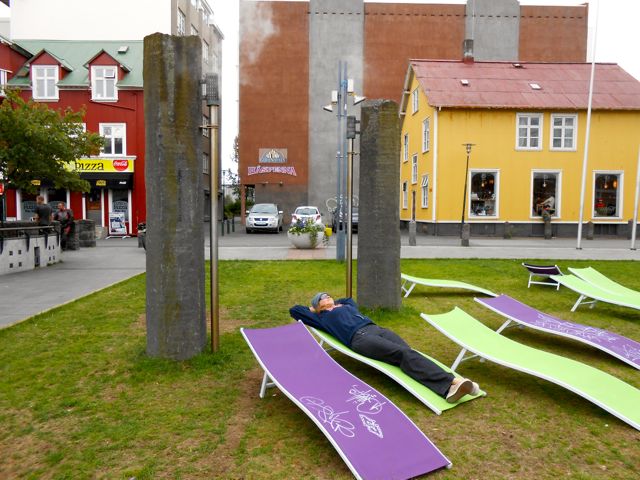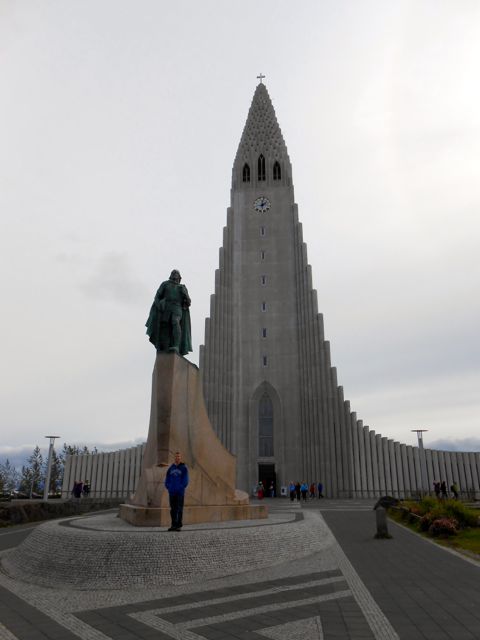Iceland's Cultural Center
After spending almost a week exploring the geologic history and waterfalls of Iceland, we were left with a free day in Reykjavik. We and no definitive plan, just to wander around the city. That was all the plan we needed to learn about Iceland's human history. There were enough monuments and plaques to teach us about Iceland's human past without us having to spend much effort to search it out.
 |
| I pose with a statue of Ingolfur Arnarson, the first settler of Iceland. |
This cohabitation of Vikings who believed in Norse gods and the up and budding Christians led to an all out civil war in the fledgling country. It's kind of ironic that within one hundred years of fleeing conflict, the descendants of the settlers were waging a civil war. Eventually by the year 1000, one of the rulers decided to end the conflict by decreeing the state religion to be Christianity, although there were some allowances of the people to worship in their old Norse faith privately. As I mentioned in an earlier post, the Waterfall of the Gods was so named, because idols of Norse gods were thrown into its churning waters as the locals accepted their new religion.
 |
| I stand with the baptism stand inside the church or Reykjavik. It has the plain interior of protestant sects, the grey appropriate of its location so close to the Arctic Circle. |
While Iceland was independent when it made Christianity the state religion, it did not stay that way for long, eventually submitting to Norwegian rule, then Swedish rule when Sweden ruled Norway, and then Danish rule, when Denmark ruled Norway and Sweden. The Norwegians by this time had adopted the teachings of the new protestant sect of Christianity known and Lutheranism and they forced Iceland to adopt those teachings as well. All of this we learned on our next stop, the state Lutheran church of Iceland, seated on the highest point in Reykjavik.
 |
| The view of Reykjavik ad the ocean beyond from the church's bell tower. |
I must say my first impressions of the church was that it was very very Icelandic. With grey bare stone walls and towering arches it looked like the bow of a ship on the exterior and belly of ship on the interior. The stark colors were a perfect match to the cloudy skies we saw so much of while visiting the island country. We paid a few Icelandic chrones for the privilege of ascending the bell tower. From the tower we could see the brightly colored roofs of the city. I was unaware of the theme of colored roofs from the ground. Taking in the city from the bell tower was a nice end to our self led tour of Iceland's capital.
 |
| David poses inside the bell tower. |
Due to the volcanic activity abundant on the island, Iceland's main power source is geothermal, and on another day we visited one famous tourist trap that is a result of geothermal power generation: the Blue Lagoon. About an hour away from Reykjavik, the Blue Lagoon is supposedly a natural geothermal spring with water rich in minerals good for the skin. For a fee tourists can go for a swim in lagoon and rub their skin in muds meant to cleanse and exfoliate the skin. We arrive right around sunset, paid the price and went into the locker rooms to change.
 |
| I wait for our bus in the cold weather trying to catch some sun. |
What we found upon entering the lagoon area was a very fake pool. The "lagoon" itself is basically a pool with fake rocks bordering it. The rocks which should have been volcanic in nature we probably made of plaster, very non volcanic. Also water is pumped into the "lagoon"; not as a natural spring would get its water. I have no way to prove this other than the proximity and what I know about geothermal power, but there is a geothermal power plant right next to the lagoon, which I suspect is the source of the water in the lagoon. The water is pumped into the lagoon is probably sourced from the plant, and the special mud is probably the muck they scape off the filters at the plant. The mud can be bought in the gift shop at exorbitant prices. I kind of admire how they took their waste and turned it into another money making enterprise. Evidence of this geothermal power was evident in Reykjavik as well. While we waited for our shuttle we found a small yard with lounge chairs and little tubes allowing steam to escape from the ground. It was a nice place to wait and reflect on my day in Reykjavik.
 |
| This Mexican restaurant in Reykjavik sells whale steaks. In such an unforgiving environment people had to settle with whatever they could get a hand on for food. |

No comments:
Post a Comment